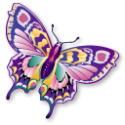Here are my magic steps on how I teach myself to speak non-native languages. I also sugggest you print this post to keep a hardcopy for your reference.
 Learn first to say hello in that language. People forget that when we were a child,that is the word that our parents and friends of our parents use when they meet: on the phone, at work, at the park etc. By learning to use the greeting word on a regularly basis you are reminding yourself to focus on a new language. It does not matter if nobody else at home speaks the language (the same as it matters not if no one at home eats cereal in the morning except yourself). Stay alert from the very beginning. Kids are always hungry for activity when they wake up and they would rush to their parents’ bedroom for morning hugs. And the very first words that parents say to them has always been, “Good morning, buddy!” A Muslim is taught to say, “Peace be upon you,” when they meet another fellow Muslim. “Shalom, Greetings, How do you do?”
Learn first to say hello in that language. People forget that when we were a child,that is the word that our parents and friends of our parents use when they meet: on the phone, at work, at the park etc. By learning to use the greeting word on a regularly basis you are reminding yourself to focus on a new language. It does not matter if nobody else at home speaks the language (the same as it matters not if no one at home eats cereal in the morning except yourself). Stay alert from the very beginning. Kids are always hungry for activity when they wake up and they would rush to their parents’ bedroom for morning hugs. And the very first words that parents say to them has always been, “Good morning, buddy!” A Muslim is taught to say, “Peace be upon you,” when they meet another fellow Muslim. “Shalom, Greetings, How do you do?”
 Now test yourself and have others to participate preferably someone who is native or knows the language. This is not an examination, just a practical approach to do a self-check.
Now test yourself and have others to participate preferably someone who is native or knows the language. This is not an examination, just a practical approach to do a self-check.
It is easy to say something right but it is always harder to respond to something right correctly. Make sense
I use twitter to learn Spanish. I needed a place where I am not obliged to respond to anyone quite immediately. To let the knowledge sink in, you have to be in control of the distractions and voices that come from different parts of your surroundings. So far, I have made better progress when I limit my responses or text entries to no more than 200 words.
 As you are thinking of what you want to say, use your native language to make a good sentence which is complete and grammatically correct. For example, “My name is Jack.” Then start working on the foreign sentence. Many new languages come to us as a vision or image with no exact meaning. It’s the same as when you see a strange looking tree for the first time. Our mind need to adjust the new term and we must not struggle to find meaning behind foreign phrases we have created. If we do try too hard, we will block the memory path.
As you are thinking of what you want to say, use your native language to make a good sentence which is complete and grammatically correct. For example, “My name is Jack.” Then start working on the foreign sentence. Many new languages come to us as a vision or image with no exact meaning. It’s the same as when you see a strange looking tree for the first time. Our mind need to adjust the new term and we must not struggle to find meaning behind foreign phrases we have created. If we do try too hard, we will block the memory path.
Allow any mistakes to flow through without fear. It is like sinking and floating as you are learning to swim.
The more mistakes you make toggling with the same phrases, the better your chances of being able to correct them because in your head, you will start to figure out the meaning based on the known native phrases. So what actually is happening is you are allowing the same meaning of two different languages to come through and pop up in your head in so many different angles. Ultimately, you start to discover grammar and culture in the grammar.
My common greeting phrase for Spanish is “Buenos dias!” I say this all the time on the internet. Then one day, my friends (on twitter) start to use ‘buen dia’. I started to think, “Ok, buenos is good, so buen must be good too eh? What’s dia then?” Of course I can check from the dictionary what it means. But the point is, you must see the language with the inner eye and start to do some self analysis of phrases that you are already familiar with.
 Where can you practise? This is one of the most essential to say the least. If you are living a place where no one speaks the language you are learning, what are you going to do? It is simply impossible to imagine ever getting started right? Here are some suggestions:
Where can you practise? This is one of the most essential to say the least. If you are living a place where no one speaks the language you are learning, what are you going to do? It is simply impossible to imagine ever getting started right? Here are some suggestions:
# get on the internet and start a search for social sites online;
# write a postcard & send it an imaginary foreign friend you admire called Dora Explorer;
# dress up your closet; fill the hangers with ethnic costumes to create a new fashion taste;
# spice up your kitchen with all sorts of strange condiments, herbs, jamu, candies or canned food;
# eat the food of the people from where your foreign language originates;
# get an Ipod and start downloading all sorts of foreign language music;
# fill up your dvd racks with movies that have subtitles in the foreign language;
# dine at the restaurant which serves the native cuisines;
# learn to order from the menu written in the foreign language;
# subscribe to a foreign media or magazine;
# travel
# download free 6 day courses before thinking seriously of a full time course.
 It is not difficult to think of the different ways you can dress your environment to begin learning a foreign language. It is only impossible if your first thought is that your language depends only on people. Here’s an exercise that does not depend on another human to teach you to learn new word. Tips To Learn A Foreign Language At Home
It is not difficult to think of the different ways you can dress your environment to begin learning a foreign language. It is only impossible if your first thought is that your language depends only on people. Here’s an exercise that does not depend on another human to teach you to learn new word. Tips To Learn A Foreign Language At Home
When we speak of language, we are talking about the whole sum of the surroundings that affect the way of life of an individual and his interactions with the people and surroundings about him.
Discover your learning styles. Unlike kids, adults are apt to reject knowledge because they have been conditioned to sieve information or data in the knowledge to only receive and use what is relevant. Sometimes the most insignificant steps mean a lot more than large chunks of tips. Read this: Are You Wasting Time With Google Search For Languages?
If you wish to add suggestions, you are welcome to do so by adding your comments below.
Further references:
“How do you do?” … “How do I do what?”



Yes. I think we must start from the little thing like say hello on other language, I agree with you. This post inspiring me to improve my skills.
Thanks Annie
I am not sure where you are getting your info, but good topic.
I needs to spend some time learning more or understanding
more. Thanks for magnificent information I was looking for this information for my mission.
Hi, I have been learning 3 languages for more than 4 decades. Everything written here is based on my experience. If you do find topics that appeal to you, it would mean one thing, as longlife learners, we have something in common to talk about here. Thank you for reading. Do come again.